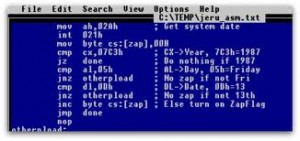Microsoft
Bill Gates Steps Aside
Microsoft chairman Bill Gates steps aside as chief executive and promotes company president Steve Ballmer to the position. Gates would stay on as “chief software architect” until June of 2008 before finally giving up day-to-day responsibilities at Microsoft. Gates is still Microsoft’s chairman of the board.
Friday the 13th Virus Gets Brits
The “Friday the 13th” virus strikes hundreds of IBM computers in Britain. This is one of the most famous early examples of a computer virus making headlines. Over twenty years later, while other companies have systems that are practically immune to virues, Microsoft still hasn’t been able to develop a solution to prevent viruses from infecting their systems.


